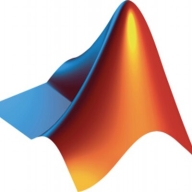

Veracode and Polyspace Code Prover compete in code security and analysis. Veracode often has the edge due to its seamless integration and ease of use.
Features: Veracode provides a comprehensive SaaS platform, facilitating seamless integration into CI/CD pipelines. It offers versatile usage across different environments and ensures ease of use. Polyspace Code Prover is equipped with precise formal verification tools, emphasizing detailed formal static analysis. Its capabilities are most beneficial to safety-critical systems where rigorous code verification is necessary.
Room for Improvement: Veracode could improve its in-depth code analysis, expand features for more comprehensive code reviews, and enhance reporting capabilities. Polyspace Code Prover can work on smoother integration with other development tools, simplifying setup processes, and refining user interface for ease of use.
Ease of Deployment and Customer Service: Veracode offers high scores in cloud-based deployment, enabling rapid integration supported by responsive customer service. Polyspace requires more thorough initial configuration and effort in setting up, focused on comprehensive reviews with an emphasis on on-premise installations.
Pricing and ROI: Veracode is considered cost-effective with strong ROI, suitable for fast-paced development environments. It has appealing pricing for teams requiring quick and scalable solutions. Polyspace is more costly, justifying the investment with projects that demand rigorous code verification and where verification precision is paramount.
| Product | Market Share (%) |
|---|---|
| Veracode | 7.7% |
| Polyspace Code Prover | 1.4% |
| Other | 90.9% |


| Company Size | Count |
|---|---|
| Small Business | 69 |
| Midsize Enterprise | 43 |
| Large Enterprise | 112 |
Polyspace Code Prover is a sound static analysis tool that proves the absence of overflow, divide-by-zero, out-of-bounds array access, and certain other run-time errors in C and C++ source code. It produces results without requiring program execution, code instrumentation, or test cases. Polyspace Code Prover uses semantic analysis and abstract interpretation based on formal methods to verify software interprocedural, control, and data flow behavior. You can use it on handwritten code, generated code, or a combination of the two. Each operation is color-coded to indicate whether it is free of run-time errors, proven to fail, unreachable, or unproven.
Veracode is a leading provider of application security solutions, offering tools to identify, mitigate, and prevent vulnerabilities across the software development lifecycle. Its cloud-based platform integrates security into DevOps workflows, helping organizations ensure that their code remains secure and compliant with industry standards.
Veracode supports multiple application security testing types, including static analysis (SAST), dynamic analysis (DAST), software composition analysis (SCA), and manual penetration testing. These tools are designed to help developers detect vulnerabilities early in development while maintaining speed in deployment. Veracode also emphasizes scalability, offering features for enterprises that manage a large number of applications across different teams. Its robust reporting and analytics capabilities allow organizations to continuously monitor their security posture and track progress toward remediation.
What are the key features of Veracode?
What benefits should users consider in Veracode reviews?
Veracode is widely adopted in industries like finance, healthcare, and government, where compliance and security are critical. It helps these organizations maintain strict security standards while enabling rapid development through its integration with Agile and DevOps methodologies.
Veracode helps businesses secure their applications efficiently, ensuring they can deliver safe and compliant software at scale.
We monitor all Application Security Tools reviews to prevent fraudulent reviews and keep review quality high. We do not post reviews by company employees or direct competitors. We validate each review for authenticity via cross-reference with LinkedIn, and personal follow-up with the reviewer when necessary.